Ancient Bronze Sculptures from the Srivijaya Kingdom
Little is known about the kingdom of Srivijaya which was centred on southern Sumatra and the Malay Peninsula around the 8th-13th centuries. Even the kingdom’s form is unclear but likely comprised a loose federation of towns, cities and city states. Essentially, it was the pre-Islamic forerunner of what became the various Malay sultanates that came to occupy the east coast of Sumatra, and the Malay Peninsula, including what today is southern Thailand.
As such, the Srivijaya civilisation was a pre-Islamic Malay prototype. It is likely that its main city was near Palembang in southern Sumatra and that the main language spoken was a form of Malay. The civilisation’s trade routes and satellite cities on the Malay Peninsula saw the spread of the Malay language to the Peninsula. As with later Malay architecture, the kingdom’s buildings were made almost exclusively of wood, other than some Buddhist stone stupas in southern Thailand, and so almost no archaeological architectural evidence of the civilisation remains, certainly not on Sumatra. This has made it difficult to establish exactly where the civilisation’s main settlements were. It also meant that for a long time, even its existence was largely unacknowledged.
Today, the main evidence of the civilisation’s existence comes from the one permanent aspect of the kingdom’s material culture – its religious bronze images, both Hindu and Buddhist that have been unearthed in the area over the last hundred years – that have been found in the region. Interestingly, these bronze images comprise both locally produced examples, and ‘missionary’ bronzes imported from India. With regards the latter category, it is likely that many ‘Srivijaya’ bronzes found in Sumatra particularly were actually cast in India. Some examples clearly are Indian and are demonstrably Pala for example. Others are so idiosyncratic in motif and form that almost certainly they are locally produced. And then there are others for which the place of manufacture is difficult to establish.
The main material evidence of the kingdom’s existence – these religious bronze sculptures – point to a dynamic, rich and outward-looking trading culture – one that was receptive to innovation and outside influence. Further evidence of Srivijaya’s existence comes from records in China which reported from the 3rd century the existence of prosperous settlements around the Gulf of Thailand, the Malay Peninsula and the east coast of Sumatra. The prosperity was based on trade, particularly trade routes between India and China. Indian merchants, and later Indian missionaries, introduced to the region their customs and cultural traditions, their literature and writing systems, systems of governance, and their religious beliefs. It is in this context that religious bronze sculpture also was introduced.
One particularly famous missionary was Atisa (c. 982-1054), a Buddhist religious leader and teacher from Bengal at a time when the region was under the control of the Pala Empire. Atisa is believed to have spent 12 years living in Sumatra and based himself in Srivijaya, only leaving Sumatra in 1025AD when Rajendra Chola I of South India’s Chola dynasty invaded Sumatra. Thereafter, Atisa travelled through Nepal and settled in Tibet. He died near Lhasa in 1054. His main disciple Dromton establish the Kadam school of Tibetan Buddhism and in turn this evolved in to the Geluk school – the school of the Dalai Lamas.
In this way, Gupta, Post-Gupta and Pala art traditions arrived from India. Other artistic influences came from the Dvaravati and Khmer artistic traditions from what is today northern Thailand and Cambodia.
Bronzes from both the Buddhist and Hindu traditions from the same period have been found in Sumatra and the Malay Peninsula suggesting that Mahayana Buddhism and Hinduism – most particularly Vaishnavism – peacefully co-existed in 5th-9th century Southeast Asia. Neither is it likely that the two traditions were mutually exclusive. Sometimes, bronzes appear which seem to hail from both traditions.
The variety of influences coming from the east and the west of Asia, as well as from these different religious traditions, meant that the range of sculptural styles that can be grouped under the Srivijaya ‘umbrella’ today is very wide. Each Srivijaya community absorbed these various external influences, as well as introducing their own indigenous, localised, artistic traditions and idiosyncrasies. This means that the types of religious bronzes found under the rubric of ‘Srivijaya’ is extremely varied.
Today the patina of such bronzes varies too. Those that are found in volcanic soil tend to have dark and heavily eroded surfaces on account of the acidity of volcanic soil. The citizens of Srivijaya, like later Malays, were riverine peoples – they lived next to and often over, rivers and estuaries – the rivers facilitated trade which provided the kingdom’s wealth. And so a large number of Srivijaya bronzes have surfaces consistent with water erosion. Other bronzes were found in relatively dry soil that was not particularly acidic, and so this lead to a third type of patina. Another aspect of Srivijaya bronzes is that the Srivijayans do not seem to have ritually bathed and handled the bronzes in such a way that their features were worn away, unlike the case in many parts of Hindu India. This means that the features of the bronzes tend to be sharper than on similar examples found in India.
Early Javanese sculptural art – that dating to around the 7th-11th century also was influenced by India – particularly northern Indian art, both Buddhist and Hindu. Again, bronzes found on Java that date from that period might well have been produced in India and exported, as well as having been cast locally. It is clear that bronzes were traded between Java and Sumatra too, further adding to the complexity of the story.
A great deal more archaeological architectural evidence survives on Java largely because the island is volcanic and so there was much more rock that could be used for construction. Later – from the 11th to the 15th century – the cultural, commercial and political centre of Java shifted from central to eastern Java. At around the same time, artistic traditions moved away from their Indian underpinnings. But the archaeological evidence for Java’s early kingdoms has meant that the existence of these kingdoms has always been clear and accordingly, their material cultural traditions have long been known and understood. The same cannot be said of Srivijaya however, which by comparison remains relatively under-researched.
© Michael Backman
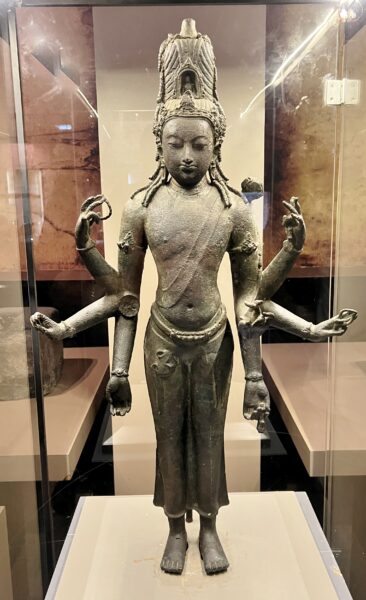
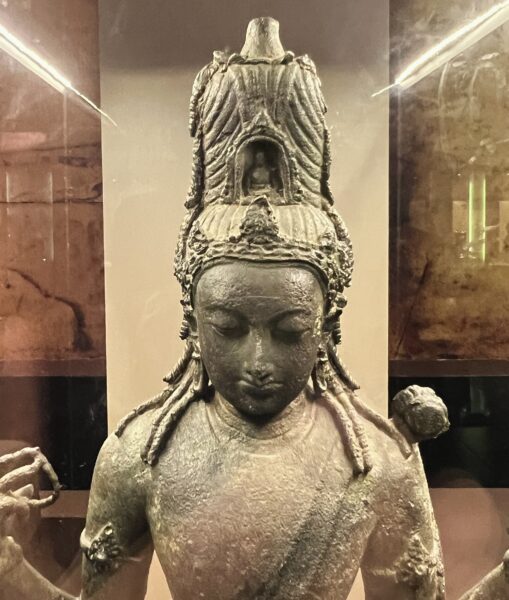
Above: A standing Avalokitesvara, 7th-12th century, found in Perak, Malaysia in 1936. Muzium Negara, Kuala Lumpur, Malaysia.
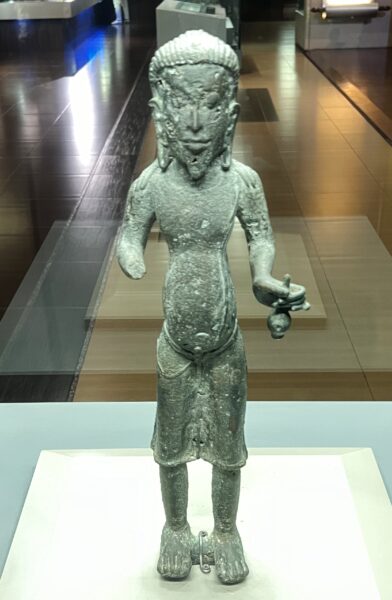
Above: A standing Shiva, 9th-11th century, found in Perak, Malaysia in 1936. Muzium Negara, Kuala Lumpur, Malaysia.
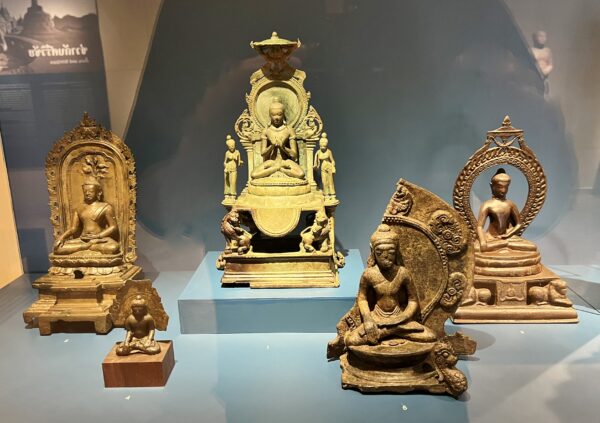
Above: A selection of Srivijaya seated Buddhist bronzes found in lower Thailand. National Museum, Bangkok, Thailand.
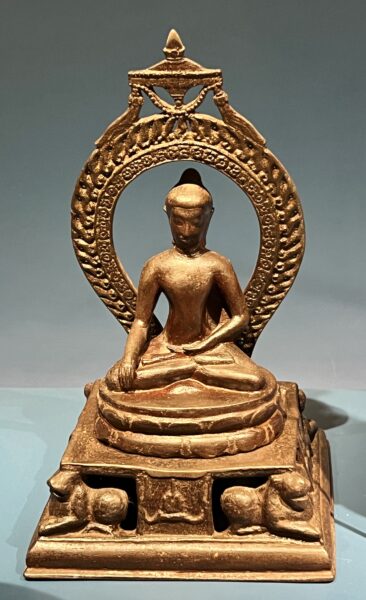
Above: A Buddha seated in Bhumispara Mudra, circa 10th-11th century, found in southern Thailand. National Museum, Bangkok, Thailand.
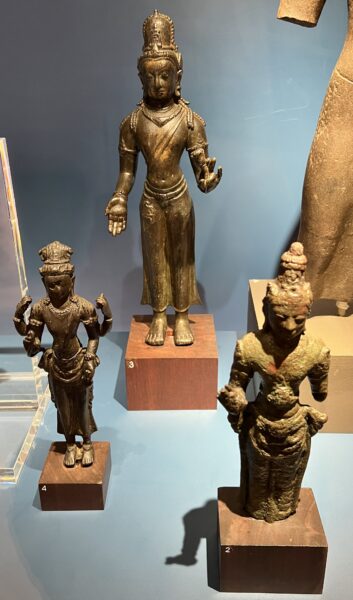
Above: A selection of Srivijaya standing Buddhist bronzes found in lower Thailand. National Museum, Bangkok, Thailand.
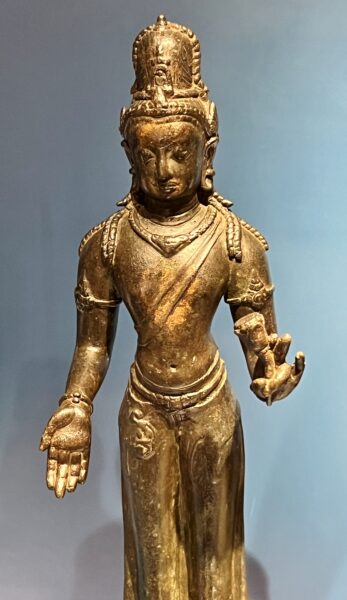
Above: A standing Avalokiteshvara, circa 9th-10th century, found in lower Thailand. National Museum, Bangkok, Thailand.
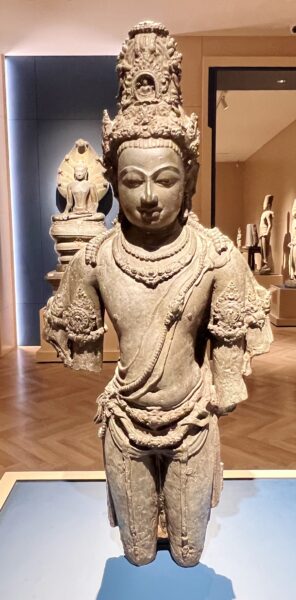
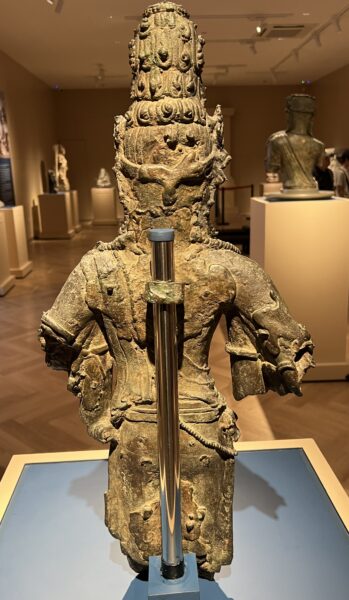
Above: A standing Bodhisattva Amoghapasa, circa 9th-10th century, found in Chaiya, lower Thailand. National Museum, Bangkok, Thailand.
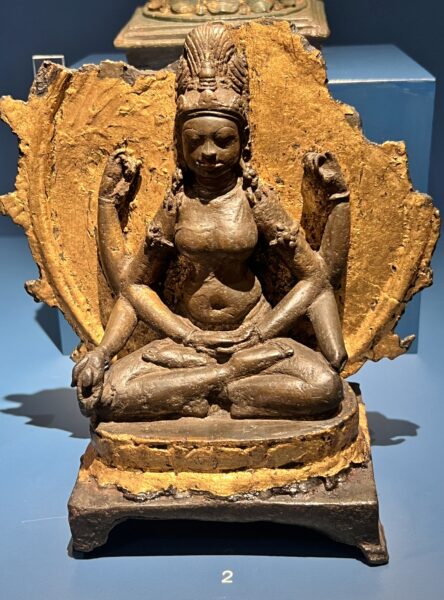
Above: A seated Bodhisattva Chunda, circa 9th-10th century, found in lower Thailand. National Museum, Bangkok, Thailand.
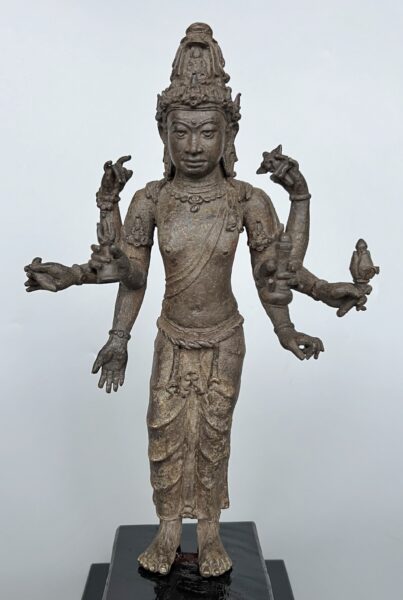
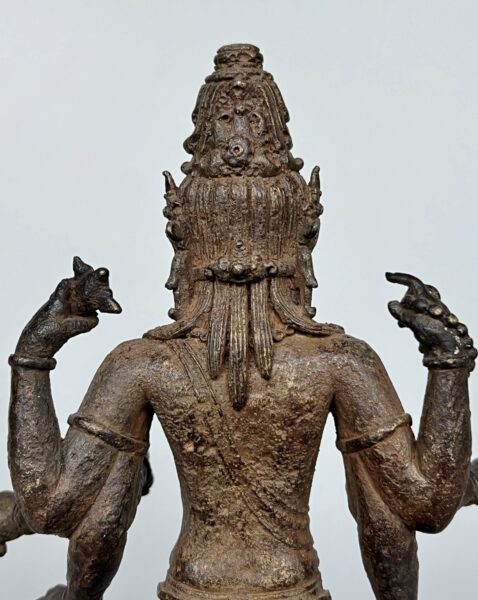
Above: A rare, standing, multi-armed Avalokiteshvara, circa 9th-10th century, Sumatra. Private collection, London.
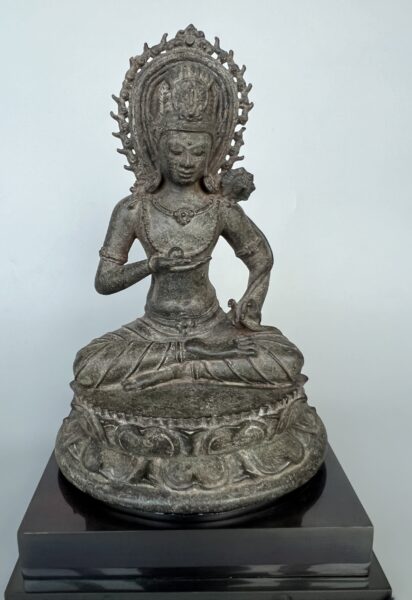
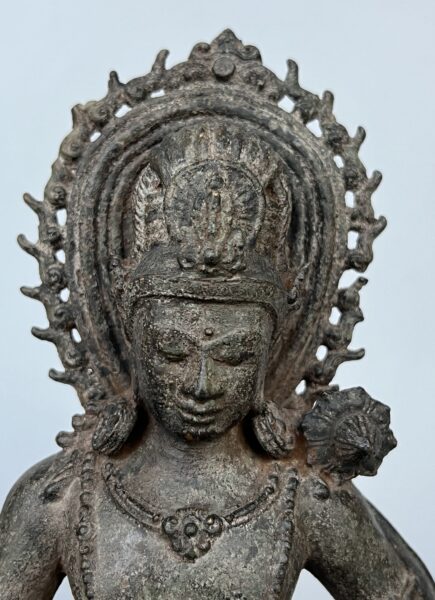
Above: A seated Avalokiteshvara Padmapani, circa 9th-10th century, Sumatra. Private collection, London.
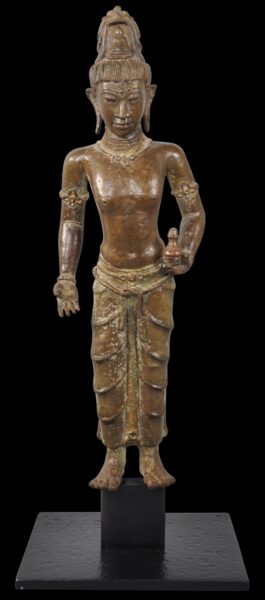
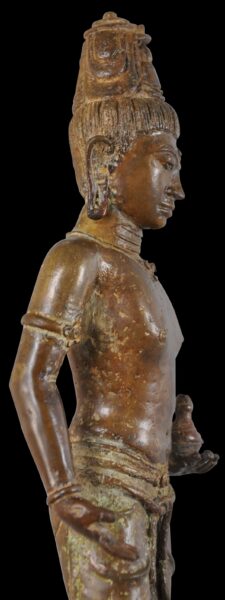
Above: A standing Maitreya, 7th-8th century, South Sumatra. Available.
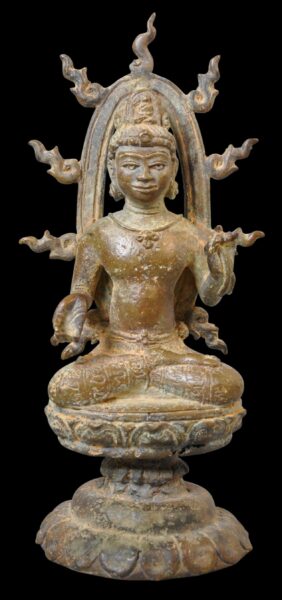
Above: Seated Avalokiteshvara, 7th-8th century, probably Sumatra. Available.
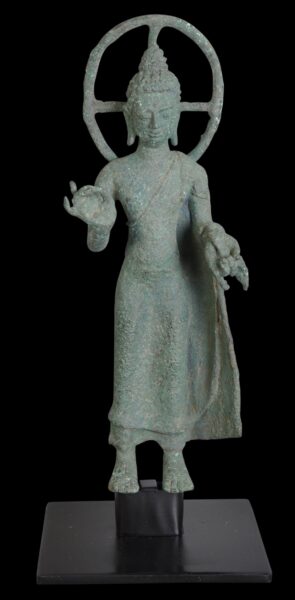
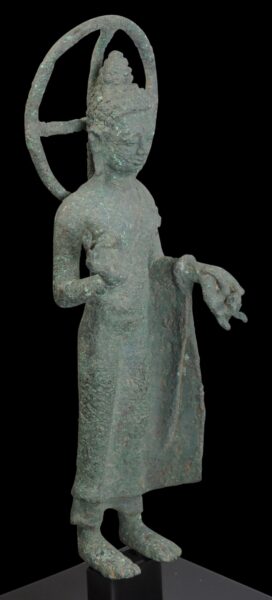
Above: Standing Buddha, Early Srivijaya with Gupta influence, 7th-8th century. Sumatra. Available.
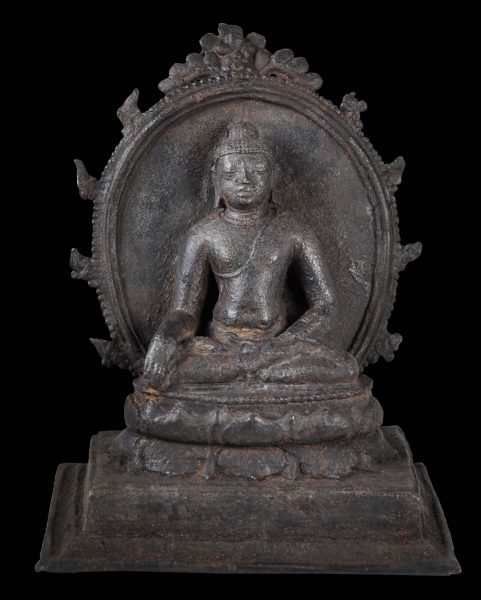
Above: Seated Buddha, circa 8th century, Java or Sumatra, but most probably imported from northern India. Available.
_________________________________
See our Indonesian & Related Items.
Receive our monthly catalogues of new stock, provenanced from old UK collections & related sources.
See our entire catalogue of available items with full search function.

